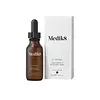What's inside
What's inside
 Key Ingredients
Key Ingredients

 Benefits
Benefits

 Concerns
Concerns

 Ingredients Side-by-side
Ingredients Side-by-side

Water
Skin Conditioning3-O-Ethyl Ascorbic Acid
Skin ConditioningMethyl Gluceth-20
HumectantPropanediol
SolventSodium Citrate
BufferingGlycerin
HumectantPhenoxyethanol
PreservativeCitric Acid
BufferingSodium Hyaluronate
HumectantCaprylyl Glycol
EmollientSodium Metabisulfite
AntioxidantPolysorbate 20
EmulsifyingVitis Vinifera Seed Extract
AntimicrobialCitrus Aurantium Dulcis Peel Oil
MaskingGlycyrrhiza Glabra Root Extract
BleachingTasmannia Lanceolata Fruit/Leaf Extract
AntioxidantSodium Benzoate
MaskingPotassium Sorbate
PreservativeLimonene
PerfumingCI 75120
Cosmetic ColorantWater, 3-O-Ethyl Ascorbic Acid, Methyl Gluceth-20, Propanediol, Sodium Citrate, Glycerin, Phenoxyethanol, Citric Acid, Sodium Hyaluronate, Caprylyl Glycol, Sodium Metabisulfite, Polysorbate 20, Vitis Vinifera Seed Extract, Citrus Aurantium Dulcis Peel Oil, Glycyrrhiza Glabra Root Extract, Tasmannia Lanceolata Fruit/Leaf Extract, Sodium Benzoate, Potassium Sorbate, Limonene, CI 75120
 Reviews
Reviews

Ingredients Explained
These ingredients are found in both products.
Ingredients higher up in an ingredient list are typically present in a larger amount.
Limonene is a fragrance that adds scent and taste to a formulation.
It's found in the peel oil of citrus fruits and other plants such as lavender and eucalyptus. The scent of limonene is generally described as "sweet citrus".
Limonene acts as an antioxidant, meaning it helps neutralize free radicals.
When exposed to air, oxidized limonene may sensitize the skin. Because of this, limonene is often avoided by people with sensitive skin.
The term 'fragrance' is not regulated in many countries. In many cases, it is up to the brand to define this term. For instance, many brands choose to label themselves as "fragrance-free" because they are not using synthetic fragrances. However, their products may still contain ingredients such as essential oils that are considered a fragrance.
Learn more about Limonene